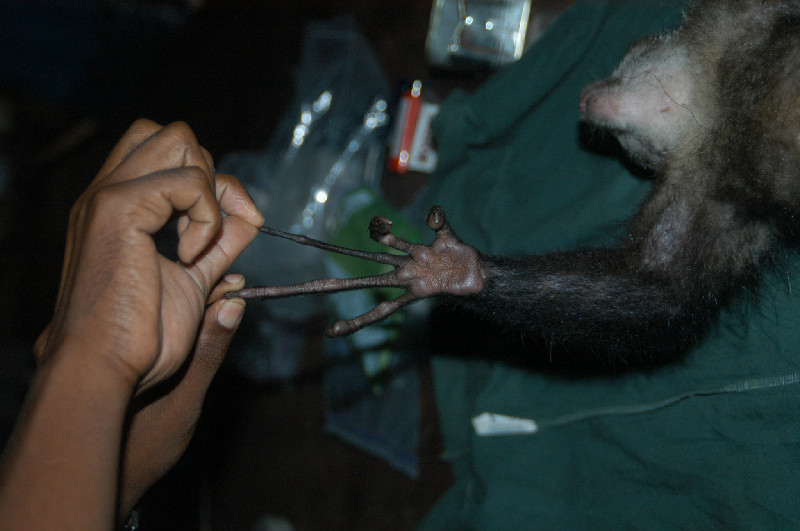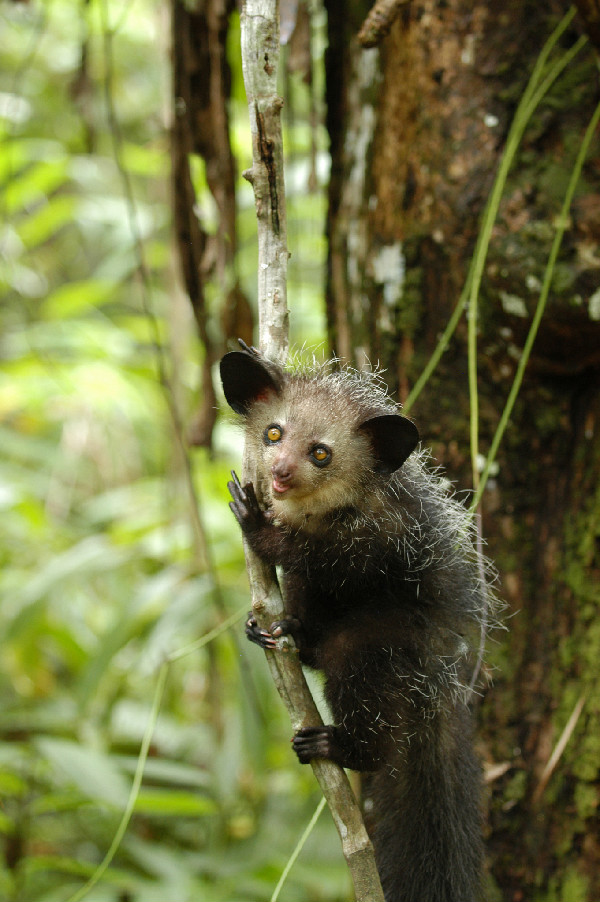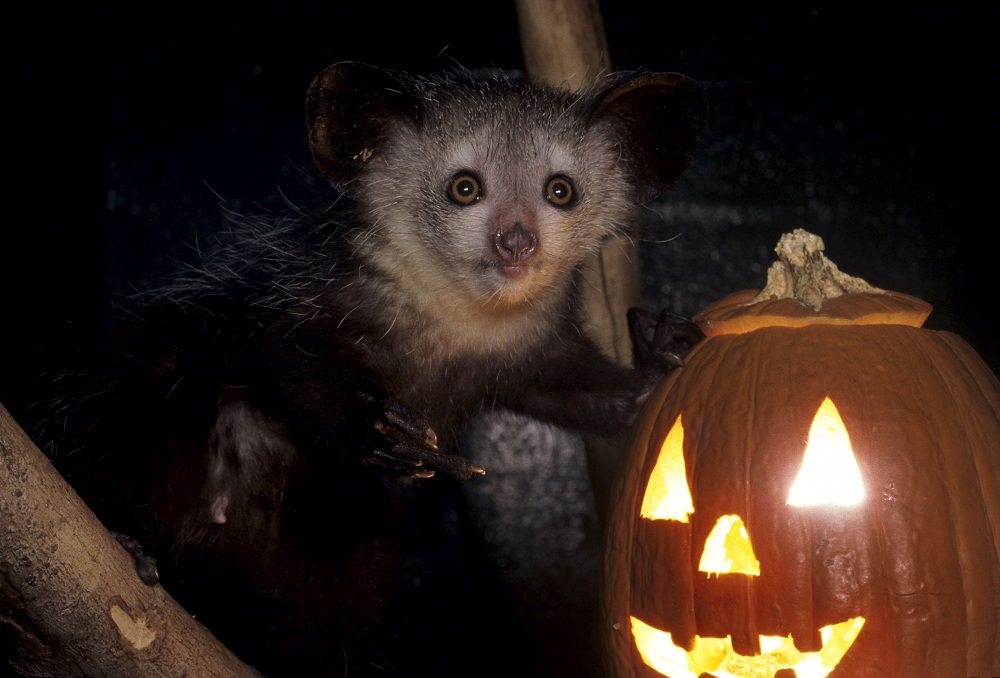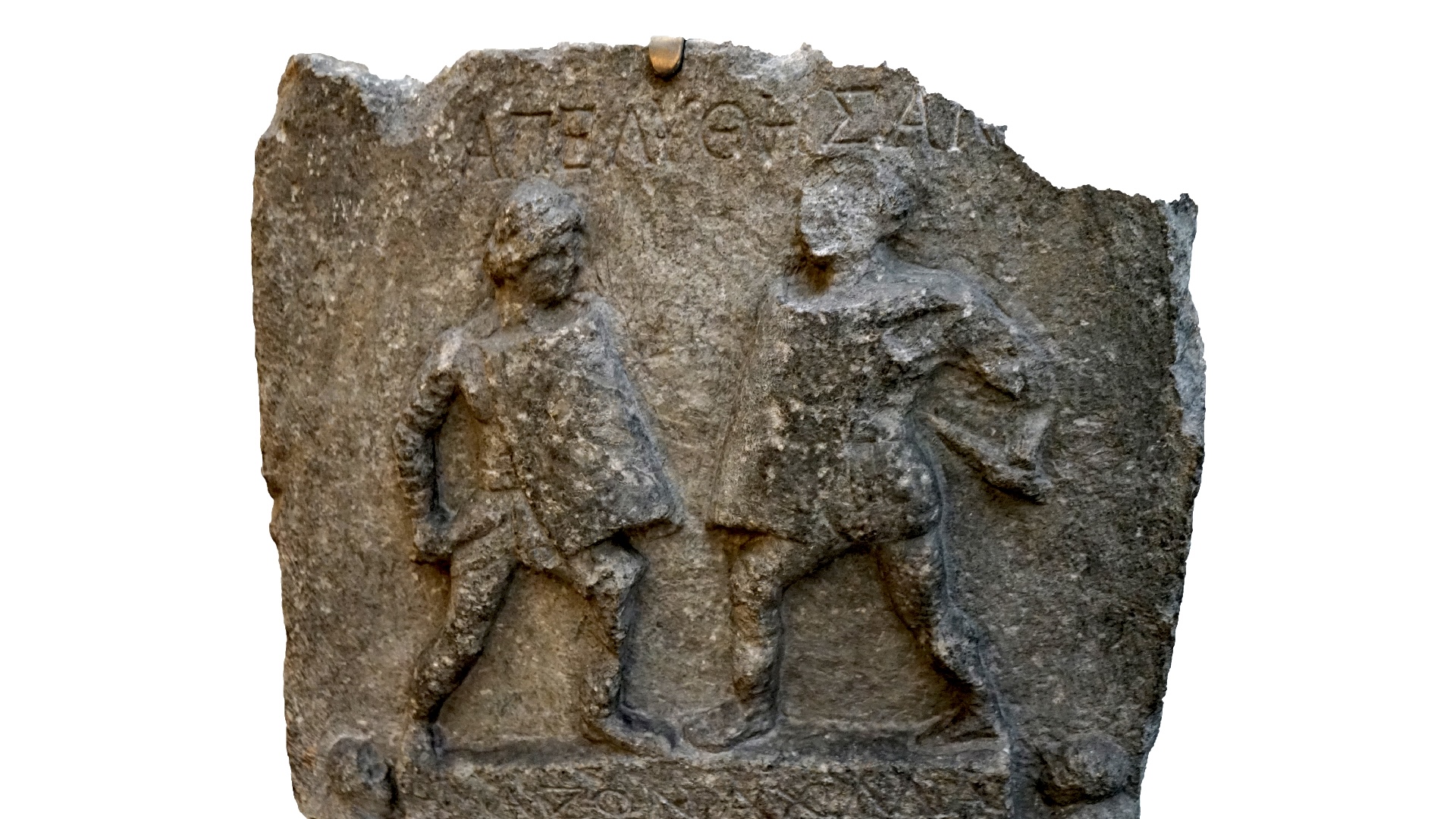Secrets of a Strange Lemur: An Aye-Aye Gallery
Meet the Aye-Ayes

With their wide-set yellow eyes, big ears, continuously growing incisors and long, skeletal fingers, aye-ayes aren’t the cuddliest looking of the lemurs. But like many lemurs — which are unique to the island nation Madagascar — aye-ayes are in danger of becoming extinct. Using tracking collars and genetic sequencing, researchers are trying to better understand them in the hopes of protecting them. This photo shows a female aye-aye.
Rarely Seen

Because of these lemurs’ appearance, some Malagasy people associate them with harbingers of evil. They are also considered a nuisance because they ruin crops. But in general, their solitary, nocturnal nature keeps them out of site. “To be perfectly honest people don’t see aye-aye all that much,” said Ed Louis, an aye-aye researcher and director general of the Malagasy nongovernmental organization the Madagascar Biodiversity Partnership.
Biodiversity Threatened

Madagascar, highlighted in green, is home to many unique plants and animals including lemurs. However, many are threatened. Over the years, much of the island country’s forests have been destroyed, and the situation has worsened since a 2009 coup d’etat. Lemurs are also increasingly hunted for meat.
Teeth Meant for Gnawing

Aye-ayes have continuously growing incisors they use to gnaw through deadwood or bamboo to get to wood-boring insect larvae or through the shells of seeds.
A Special Finger

Aye-ayes use a long, slender middle finger to extract food from a hole they have gnawed. They have been compared to woodpeckers.
Tracking Aye-ayes

To better understand aye-ayes’ habits, researchers put tracking collars on them and collect samples for analysis. In the process, Ed Louis, of the Madagascar Biodiversity Partnership, gives the animals a veterinary examination. He is shown here (seated) with Malagasy students, guides, and others. Two aye-ayes are having their collars changed.
Keeping Warm

Ed Louis keeps a young male aye-aye, named Sesson, warm in his jacket. Sesson’s tracking collar had just been changed, since the aye-aye is growing Louis and colleagues checked it every three months to make sure it didn’t get too tight. This photo was taken in June 2012, during Madagascar’s winter.
Get the world’s most fascinating discoveries delivered straight to your inbox.
Clues to Conservation

Ed Louis holding two aye-ayes. Researchers have sequenced genomes from 12 aye-ayes from three regions in Madagascar and found that one population, in the north, appears genetically distinct. Researchers hope information like this can be used to protect the species.
Solitary and Elusive

A young female aye-aye. Researchers have found that individual aye-ayes have large ranges, occupying as much as 1,500 acres (600 hectares). They are intelligent, which makes them difficult to follow and trap, Louis said.
Future of the species

Work on the aye-aye genome found evidence that they are at the low end for genetic diversity among primates. Genetic diversity is important to the long-term health of a population.
Follow LiveScience on Twitter @livescience. We're also on Facebook & Google+.

